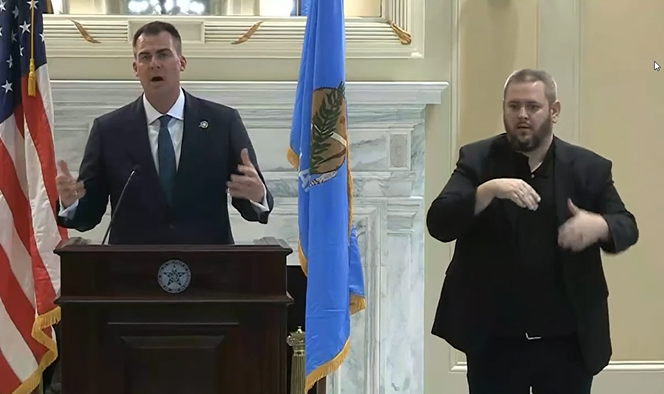
Oklahoma Gov. Kevin Stitt endorsed a bill sponsored by Sen. Greg Treat to establish an empowerment scholarship program that would make every family in the state eligible for an education savings account based on its share of public school spending.
School choice opponents like the National Education Association and American Federation of Teachers often argue that vouchers, education savings accounts, and other parent-centered reforms would “drain resources” from public schools. This reasoning forces lawmakers to choose between siding with public schools (and the powerful interest groups they serve) or parents and students who want better options.
In 2022, this canard should finally be put to bed.
Data from the Department of Education shows that states have $154 billion in unspent Elementary and Secondary School Emergency Relief (ESSER) funds provided by Congress during the pandemic. Nationally, states had spent only $30 billion of the $184 billion in ESSER funds awarded since March 2020, approximately 17 percent, as of the end of December. This doesn’t include the $350 billion in federal funds that state and local governments will receive through the 2021 American Rescue Plan that can also be used for K-12 education.
In other words, state governments and public school districts are currently sitting on more K-12 education funding than they know what to do with.
The argument that school choice programs drain resources from public schools has always been suspect. The latest national data shows that average per-pupil spending in public schools was more than $14,000 in 2018. By contrast, education choice programs typically award children just a fraction of per-child public school spending.
This means that the government actually spends less per child when children use choice programs to transfer out of public schools. A recent fiscal analysis by EdChoice’s Martin Lueken found that school choice programs save taxpayers between $3,300 and $7,500 per participating child.
But in 2022, state lawmakers no longer need to rely on economists to determine whether public schools will have enough resources if a new school choice plan becomes law. They simply can check their state’s emergency relief funding on the Department of Education’s online dashboard tracking emergency education fund expenditures.
Consider Georgia, where lawmakers have been debating bipartisan legislation to give parents $6,000 in a “promise scholarship account” for school tuition or other instructional costs if their children transfer out of public schools. The state education agency has $5 billion in unspent federal ESSER relief funds.
In Oklahoma, Governor Kevin Stitt recently endorsed a bill sponsored by Sen. Greg Treat to establish an empowerment scholarship program. Under the plan, every Oklahoma family would be eligible for an education savings account based on its share of public school spending. The Oklahoma Department of Education currently has more than $1.7 billion in unspent ESSER funds.
In Virginia, where lawmakers are considering eight different school choice bills, the Virginia Department of Education has spent only 10% of its ESSER funds and nearly $3 billion remains available.
It’s become a cliche to say that the pandemic has changed everything. But it certainly applies to K-12 education. After two years of disrupted schooling, widespread learning losses, and a mental health crisis among a generation of children, parents and the public in many communities have a new perspective about public schooling. More people now recognize that school districts often do not act in children’s best interests.
State lawmakers across the country are actively considering legislation to fund students rather than school systems. Teacher unions and other opponents of school choice reforms have lost one of their oldest arguments against giving parents control of their child’s education funding.
With more than $150 billion in emergency K-12 education funds still unspent, it no longer makes sense to question whether we can afford to give parents the power to decide where and how their children learn. In 2022, the real question is whether we can afford not to.